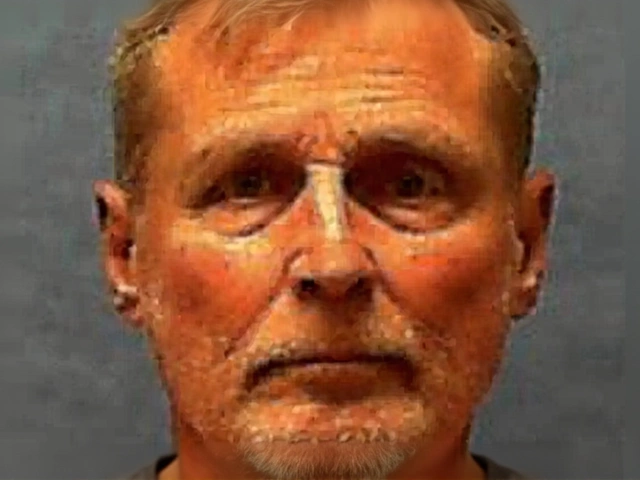At 6:16 p.m. Eastern Time on Thursday, May 15, 2025, Glen Edward Rogers, the self-styled "Casanova Killer," took his final breaths in Florida’s execution chamber — a quiet end to a decades-long trail of violence that stretched from Ohio to California. The 62-year-old, convicted for the 1995 strangulation of Tina Marie Cribbs, a 34-year-old mother of two found dead in a Tampa motel room, became the 16th person executed in the U.S. this year and the fifth in Florida. His death came just hours after the Florida Supreme Court unanimously denied his final appeal, and the U.S. Supreme Court declined to intervene — a swift, final chapter in a case that once gripped the nation with wild claims of involvement in the O.J. Simpson murders.
A Killer’s Cross-Country Trail
Rogers didn’t just kill in one place. He moved like a ghost, leaving bodies in his wake across four states. He was sentenced to death in California in 1999 for the August 1995 killing of Sandra Gallagher, a mother of three he met at a Van Nuys bar. In Kentucky, he was charged with the January 1994 murder of 71-year-old Mark Peters, whose body was found in a shack owned by Rogers’ family in Beattyville. And in Bossier City, Louisiana, the unsolved death of Andyiles Sutton Bossier, found on a punctured waterbed, remains tied to him by circumstantial evidence. Yet, only Cribbs’ murder led to his execution — the one crime prosecutors could definitively prove.
Rogers’ life before the killings was startlingly ordinary. He worked as a school bus driver for the Hamilton, Ohio school district and even served as a confidential informant for local narcotics officers — a role that gave him access to police files and, perhaps, insight into how to evade capture. He was a man who blended in, until he didn’t.
The O.J. Simpson Claim That Shook a Nation
In 2012, everything changed. Rogers’ brother, Clay Rogers, and a criminal profiler who’d corresponded with him for years, claimed Glen had confessed to being hired by O.J. Simpson to kill Nicole Brown Simpson and Ron Goldman in June 1994. The story exploded across tabloids and late-night TV. But the Los Angeles Police Department didn’t blink. They issued a blunt statement: "We know who killed Nicole Brown Simpson and Ron Goldman. We have no reason to believe that Mr. Rogers was involved."
It was a crushing blow to Rogers’ attempt to rewrite his legacy — from a low-level predator to a key player in America’s most infamous crime. He never provided a single piece of verifiable evidence. His claims, like so many of his boasts, were theatrical. He once said he’d killed nearly 70 people. Later, he admitted he was "kidding."
Medical Appeals and the Last-Minute Fight
His final legal battle wasn’t about innocence. It was about pain. His attorneys argued that Florida’s lethal injection protocol — which included the drug etomidate — could cause unbearable suffering due to Rogers’ diagnosed "chronic ambulatory psychotic disturbance with schizophrenia, paranoia and mania," a condition stemming from untreated brain injuries. He’d self-medicated for decades with alcohol and drugs, they said, making him more vulnerable to agony.
The Florida Supreme Court dismissed the argument on May 14, 2025, citing its prior rulings — including the April 8, 2025 execution of Michael Tanzi, another condemned killer — and noting etomidate would render Rogers unconscious within a minute. "The state has a compelling interest in carrying out lawful sentences," the court wrote. "The Constitution does not guarantee a painless death."
Decades of Denials, One Final Word
Over 28 years, Rogers filed more than a dozen appeals. He claimed childhood sexual abuse at the now-closed Training Institute of Central Ohio in Marysville, Ohio, saying the trauma had been repressed until 2019. He argued his trial counsel was ineffective. He questioned the chain of custody for evidence. All were rejected. Attorney General James Uthmeier summed it up in a letter to Governor Ron DeSantis: "This man has had more chances than most. He’s been heard. He’s been reviewed. He’s been given every procedural safeguard the law allows."
DeSantis signed the death warrant on May 13, 2025 — a swift, decisive act that ended months of legal limbo. Rogers’ execution was the first in Florida since April, when Tanzi died. It was also the 110th in the state since the death penalty resumed in 1976. Nationwide, executions are declining: 15 by May 1, 2025, compared to 25 for all of 2024. Florida remains among the most active states, but even here, the pace is slowing.
What Comes Next?
With Rogers gone, attention turns to Anthony Wainwright, scheduled for execution on June 10, 2025, at the same prison in Raiford. He was convicted of raping and murdering a 12-year-old girl in 2005 — a crime that sparked statewide outrage. The state’s death row, now with 311 inmates, is shrinking slowly, but not emptying. The legal machinery, though creaky, still turns.
For Hamilton, Ohio — the quiet town where Rogers was born, raised, and first began his descent — the execution brought no closure, only a grim reminder. His childhood friends still remember him as quiet, odd, but harmless. The truth? He was always hiding in plain sight.
Frequently Asked Questions
Why was Glen Rogers executed for Tina Cribbs’ murder and not the others?
Prosecutors in Florida had the strongest, most irrefutable case against Rogers for Cribbs’ murder — DNA evidence, witness testimony, and his own incriminating statements. While he was convicted in California for Sandra Gallagher’s death and charged in Kentucky and Louisiana, those cases lacked the same level of conclusive evidence or were hampered by jurisdictional delays. Florida moved first, and under U.S. law, a death sentence can be carried out even if a person is suspected of other crimes.
Did Glen Rogers’ mental illness affect his execution?
His legal team argued his schizophrenia and brain injuries made the lethal injection cruel and unusual punishment. But courts have consistently ruled that mental illness doesn’t exempt someone from execution unless they’re legally insane at the time of the procedure. Rogers understood his crimes and the consequences — he even bragged about them. The state maintained he was competent, and the U.S. Supreme Court declined to review that determination.
Why did the LAPD dismiss Rogers’ claim about the O.J. Simpson murders?
The LAPD had already identified and prosecuted their suspect — O.J. Simpson — in a civil case, and their criminal investigation concluded long before Rogers came forward. No forensic, alibi, or witness evidence linked Rogers to the crime scene. His claims were inconsistent, lacked corroboration, and appeared to be an attempt to gain notoriety. The department called it "baseless speculation" — a view shared by most criminal justice experts.
How many people has Florida executed since 1976, and how does 2025 compare?
Florida has carried out 110 executions since the death penalty was reinstated in 1976. In 2025, five people have been executed as of May 15, including Rogers. That’s a significant drop from 2024’s total of 25 nationwide, with Florida accounting for six of those. The decline reflects legal challenges, drug shortages, and growing public skepticism about capital punishment — even in states that still use it.
What’s the significance of Rogers’ connection to Hamilton, Ohio?
Hamilton was where Rogers was born, raised, and worked as a school bus driver — a role that gave him access to vulnerable populations. His ties to the community made his crimes more shocking. The town still grapples with how someone from their midst became a national symbol of predatory violence. His case exposed gaps in how local authorities monitored former informants and how childhood trauma can fester into lifelong criminal behavior.
Is there any chance Rogers’ execution could be overturned?
No. Once a person is executed, no court can reverse the sentence. The U.S. legal system treats execution as final. Even if new evidence surfaced tomorrow — say, a confession from someone else — it would not change the outcome. The only possible legal recourse would have been a stay of execution before the lethal injection, which was denied at every level.





